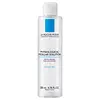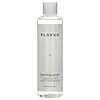What's inside
What's inside
 Key Ingredients
Key Ingredients

No key ingredients
 Benefits
Benefits

 Concerns
Concerns

No concerns
 Ingredients Side-by-side
Ingredients Side-by-side

Water
Skin ConditioningButylene Glycol
HumectantDipropylene Glycol
HumectantPEG-6 Caprylic/Capric Glycerides
EmulsifyingGlycerin
HumectantLinum Usitatissimum Seed Extract
PerfumingHydrolyzed Pearl
Skin ConditioningRosa Damascena Flower Extract
MaskingSaccharomyces Ferment Filtrate
HumectantAloe Barbadensis Leaf Polysaccharides
EmollientMilk Lipids
Skin ConditioningHydrolyzed Collagen
EmollientPEG-40 Hydrogenated Castor Oil
EmulsifyingCaprylyl Glycol
EmollientEthylhexylglycerin
Skin ConditioningDecyl Glucoside
CleansingSodium Citrate
Buffering1,2-Hexanediol
Skin ConditioningCitric Acid
BufferingPropanediol
SolventTheanine
EmollientGlutathione
Disodium EDTA
Phenoxyethanol
PreservativeWater, Butylene Glycol, Dipropylene Glycol, PEG-6 Caprylic/Capric Glycerides, Glycerin, Linum Usitatissimum Seed Extract, Hydrolyzed Pearl, Rosa Damascena Flower Extract, Saccharomyces Ferment Filtrate, Aloe Barbadensis Leaf Polysaccharides, Milk Lipids, Hydrolyzed Collagen, PEG-40 Hydrogenated Castor Oil, Caprylyl Glycol, Ethylhexylglycerin, Decyl Glucoside, Sodium Citrate, 1,2-Hexanediol, Citric Acid, Propanediol, Theanine, Glutathione, Disodium EDTA, Phenoxyethanol
Ingredients Explained
These ingredients are found in both products.
Ingredients higher up in an ingredient list are typically present in a larger amount.
Disodium EDTA plays a role in making products more stable by aiding other preservatives.
It is a chelating agent, meaning it neutralizes metal ions that may be found in a product.
Disodium EDTA is a salt of edetic acid and is found to be safe in cosmetic ingredients.
Learn more about Disodium EDTAGlycerin is already naturally found in your skin. It helps moisturize and protect your skin.
A study from 2016 found glycerin to be more effective as a humectant than AHAs and hyaluronic acid.
As a humectant, it helps the skin stay hydrated by pulling moisture to your skin. The low molecular weight of glycerin allows it to pull moisture into the deeper layers of your skin.
Hydrated skin improves your skin barrier; Your skin barrier helps protect against irritants and bacteria.
Glycerin has also been found to have antimicrobial and antiviral properties. Due to these properties, glycerin is often used in wound and burn treatments.
In cosmetics, glycerin is usually derived from plants such as soybean or palm. However, it can also be sourced from animals, such as tallow or animal fat.
This ingredient is organic, colorless, odorless, and non-toxic.
Glycerin is the name for this ingredient in American English. British English uses Glycerol/Glycerine.
Learn more about GlycerinThis ingredient is derived from caprylic and capric acids. It is an emulsifier with emollient properties.
According to the manufacturer, it is hydrophilic and soluble in aqueous solutions (water). They also state this ingredient is stable in a medium pH range (~5 - 8).
As an emulsifier, it helps make oils and oil-soluble ingredients more soluble in water.
Learn more about PEG-6 Caprylic/Capric GlyceridesWater. It's the most common cosmetic ingredient of all. You'll usually see it at the top of ingredient lists, meaning that it makes up the largest part of the product.
So why is it so popular? Water most often acts as a solvent - this means that it helps dissolve other ingredients into the formulation.
You'll also recognize water as that liquid we all need to stay alive. If you see this, drink a glass of water. Stay hydrated!
Learn more about Water